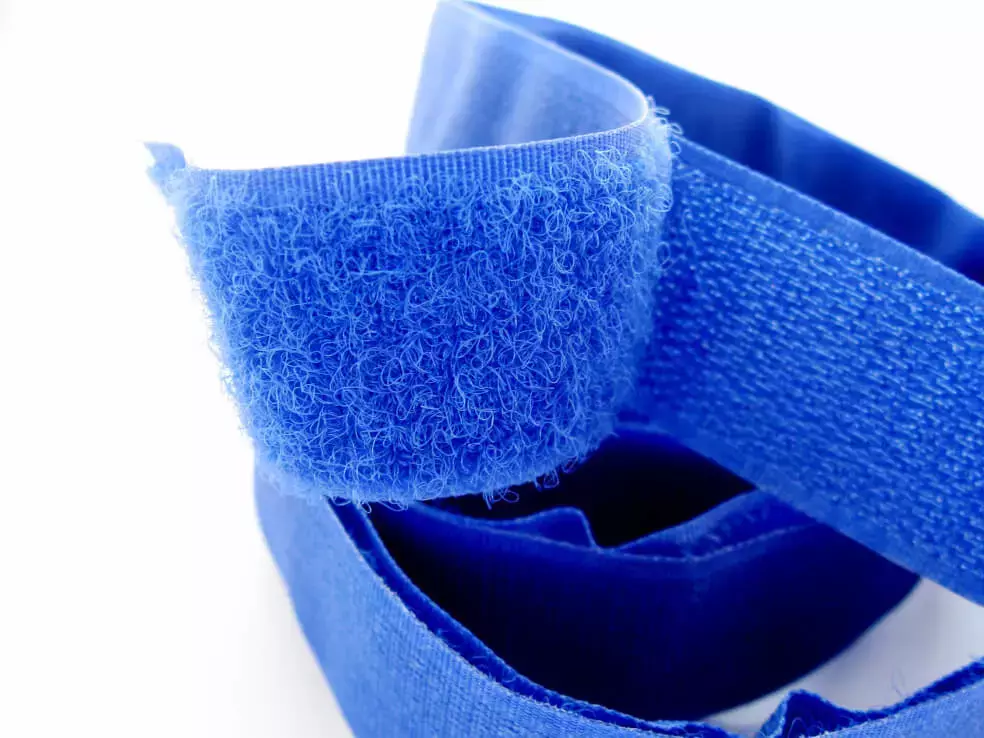What Is the Difference Between Sew On Hook and Loop vs. Peel and Stick?
2023-03-28
Hook and loop fasteners are one of the most popular forms of fastening these days. If you’ve never heard the term “hook and loop” before, you have probably heard of it by its branded name: Velcro.
Do you use Velcro products constantly but never knew exactly how each side of a Velcro item stays together? The answer is in the name “hook and loop.” Velcro's scratchy, rough side is actually a series of hundreds of tiny hooks, and the fuzzy, soft side is made up of hundreds of little loops.
When the two sides of a piece of Velcro are stuck together, the hooks attach themselves to the loops, creating a strong bond that can stay firmly attached but can still be opened with enough force when needed.
Velcro is used for many purposes — one of the most common uses for this sew on hook and loop fastener is to secure clothing items and accessories. Hook and loop fasteners are a fun and simple way to create a clasp on a jacket, purse, backpack, or other items. The clasp will be reliable and sturdy, but it will also be easy to use and simple to open when needed.
While buttons and zippers can take some skill and dexterity to maneuver, hook, and loop, clasps simply need to be pulled to be released — this is easy for most people to do with a little force.
Here’s a look at the two types of sew on hook and loop fasteners and how to use them with your sewing machine to create DIY projects at home.
What Is Sew-On Hook and Loop?
If a hook and loop fastener is of the sew-on variety, it won’t come with any adhesive on the backside. This means that you will have to attach your hook and loop fastener to the material you’re working with by using your sewing machine.
Tips for Sewing Strength Fasteners and Hook and Loop Fasteners
Stitching a piece of hook and loop fastening onto a piece of material is usually a simple sewing task that most beginner or intermediate sewers can accomplish with ease. Just make sure that the needle and presser foot you use are designed to handle hook and loop material as well as the type of material you’re attaching the fastener to.
What Is Peel and Stick Hook and Loop?
Peel and stick hook and loop fasteners function precisely how you might expect according to their name. This type of fastener comes with an adhesive already added to the backside. This means that all you have to do is peel off the protective lining to reveal the sticky adhesive and apply your hook and loop fastener wherever you’d like it to be on your project.
Some peel-and-stick hook and loop fasteners are made with a rubber adhesive, while others are made with an acrylic adhesive.
Each type of adhesive has more or less optimal applications depending on what type of material you’re attaching it to.
Which Method Should I Use?
A few factors might affect whether you use a sew-on hook-and-loop fastener or a peel-and-stick version. One of the first things you should consider is the finished product you’re working toward and how much stability that product might need.
For example, though a sporting pack and a makeup bag might both use a hook-and-loop fastener, these two hook-and-loop fasteners will likely face very different levels of wear and tear.
An item that carries important materials or is more heavily used should have a sew-on hook and loop fastener for added stability and longevity, while an item that’s more gently used will likely work just fine with a peel-and-stick hook and loop fastener.
Get Your Fasteners, Sewing Machine Accessories, DIY Ideas, and More at GoldStar Tool
A hook and loop fastener is an easy and useful feature to add to a variety of sewing machine projects. Skip the tricky snaps and buttonholes and go straight! Check out GoldStar Tool.





